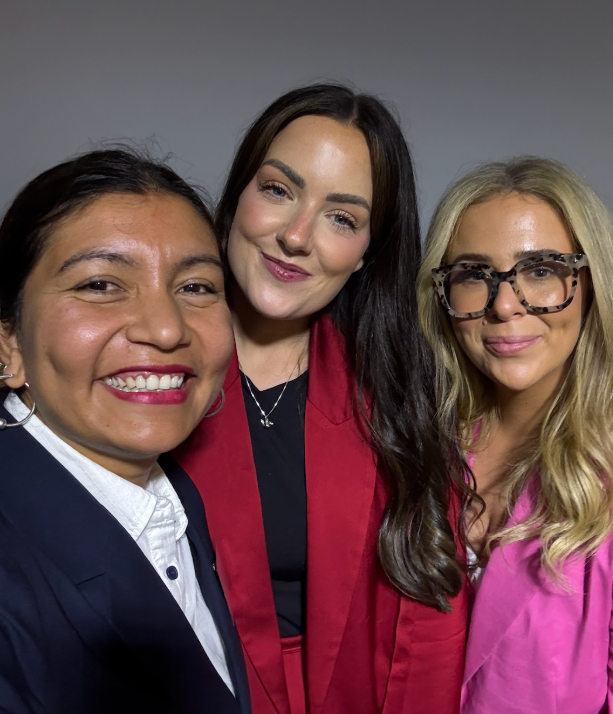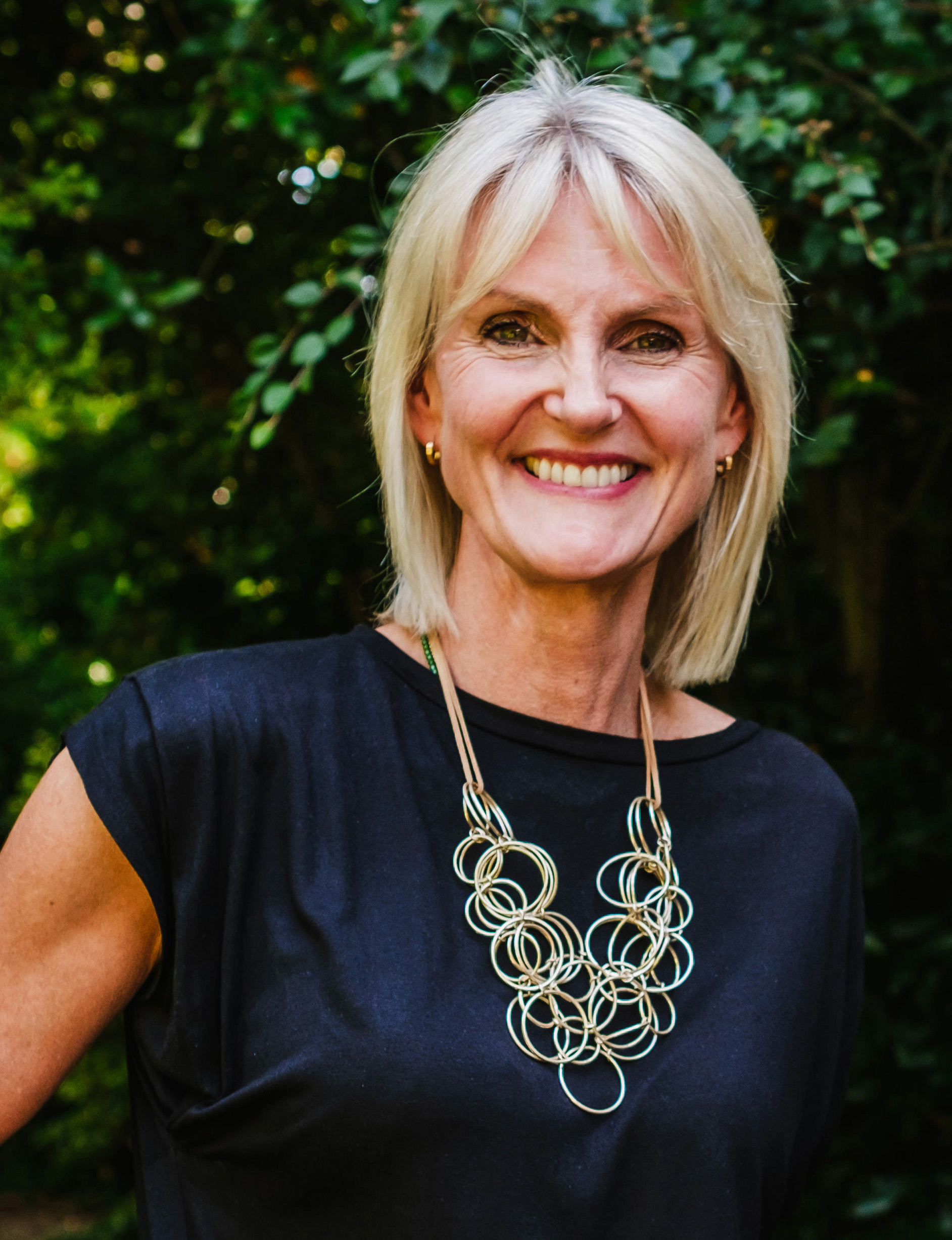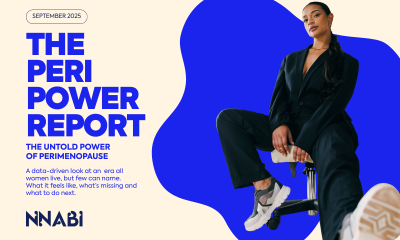Opinion
“There is a huge need for both support and education about women’s health”
By Afua Basoah, Head of Health Strategy for RAPP UK

For generations, women have lived with health and care systems that are mostly designed by men, for men.
Despite representing 51 per cent of the population, women are still significantly underrepresented in clinical trials and research. This has meant that not enough is known about conditions that only affect women, or about how conditions that affect both men and women impact women in different ways.
This gender gap contributes to worse health outcomes for women, with much less known about female health conditions than those that also or only affect men. In the UK, women have a longer life expectancy than men, with life expectancy at birth being 83.1 for women and 79.4 years for men in 2017 to 2019. However, women in the UK spend a greater proportion of their lives in ill health and disability.
In summer 2021, the UK government opened a consultation process to inform the development of a national Women’s Health Strategy. The ambition is to build a health system that better understands and is, therefore, responsive to the realities and needs of women throughout their lives.
There is a huge need for both support and education about all aspects of women’s health. Personalised, accessible and delivered in a way that evolves as their lives change. As women’s healthcare becomes an increasing priority, the femtech industry is rising to meet the challenge. The industry has already demonstrated impressive early wins and with appropriate access to funding, greater disruption could be ahead.

Afua Basoah, Head of Health Strategy for RAPP UK
In 2019, the femtech industry generated $820.6m in global revenue and received $592m in venture capital investment. Femtech pioneers, many of whom are female-founded, have benefited from cultural shifts, sparked by events such as the #MeToo movement, a growing interest in diversity and inclusion and pandemic-related digital acceleration.
While the US accounts for the lion’s share of femtech startups, the UK comes second in a market predicted to be worth in excess of $75.1B (£60.7B) by 2025. The industry represents a broad range of companies that are focused on developing technology aimed at improving women’s health and wellbeing that tend to fall into four categories: healthcare and diagnostics, reproductive health, pregnancy and family care and general health and wellness.
Of these, reproductive health, pregnancy and family care currently dominate the market and according to a recent McKinsey report “there are still significant white spaces” for growth.
The disruption in this space is driven by the need to create inclusive, individualised experiences that meet the unique identities, values and personal needs of women. The one size fits all approach has been sized out.
“The ability to understand the whole woman – her genetics, aspirations, experiences as well as unmet her health needs, provides an opportunity to holistically signpost the right solutions that takes her on a journey that touches every aspect of her well-being”.
Here, Idia Elsmore Dodsworth, co-founder of the AI-based reproductive health monitoring app, Tinto, has highlighted the fact that there is a real shift towards ‘well-care’ versus ‘sick-care’ in the femtech space.
Embedding AI into their own product has helped ensure granularity of data inputs that allows for “super-tailored” content that empower users to manage their health as seamlessly and effortlessly as with other aspects of their lives, and on their terms.
Below are a selection of femtech organisations to keep an eye on:
Founders: Dr Hannah Allen and Idia Elsmore Dodsworth
Year founded: 2019
Total funding: Undisclosed seed funding
As a provider of AI-based software solutions for reproductive health monitoring, the mission of the Tinto app is to nurture women through modern motherhood, enabling mothers to understand the full picture of their wellbeing, and to build a network through meaningful connection and proactive, personalised guidance.
The company offers a mobile app that allows users to communicate with health and wellbeing providers. It provides a curated online community where members can access information and advice from like-minded women going through similar challenges. It also provides online articles regarding baby health, women’s health and topics beyond motherhood.
Founder: Tania Boler
Year founded: 2013
Total funding: £116m
Elvie is a London-headquartered firm that manufacturers technology hardware for women. The first product by the company was the Elvie Trainer, an app-connected Kegal trainer. Followed by the Elvie Pump a quiet, wireless electric pump.
Last September it closed £70m in its Series C funding round to continue diversifying its product range.
Founders: Andrea Berchowitz and Dr Rebecca Love
Year founded: 2020
Total funding: £11.2m
London-based Vira Health focuses on women’s healthcare and improving the gathering and use of female data in healthcare.
Its first product is a menopause subscription app called Stella which guides women through menopause with tailored treatments based on the users’ symptoms.
Last month Vira Health raised £9m in a funding round to add new features to its menopause app, including telehealth and prescriptions.
Founder: Kim Palmer
Year founded: 2017
Total funding: £1m
Clementine is a mental health app for women that uses hypnotherapy to lower stress levels and build confidence. In the subscription-based app there are sleep sessions, confidence courses, anti-anxiety courses and mantras.
The app was created after founder Kim Palmer suffered with panic attacks during pregnancy. Earlier in the year, Clementine partnered with singer and songwriter Becky Hill to encourage young people on a journey to self-care.
Headquartered in London, Clementine raised $1.3m (£1m) in its seed funding round in October 2020.
Because women are not just consumers but the primary healthcare decision-makers for themselves and often for their families, better health outcomes for women can lead to better outcomes for society.
In sickness and in health, at RAPP we stand up for individuality to co-create better outcomes for all. We leverage deep understanding of the realities, values and intersectional identities creates personalised and connected brand experiences that drive healthier outcomes. We believe that predictive, preventive and inclusive health is enabled by creativity, behavioural science, data and technology.
News
Listening to pain: What eight women taught me about the state of women’s health in the UK

By Ruby Raut, founder & CEO, WUKA
It’s Ruby here, founder of WUKA and, like many of you, someone who’s been dismissed, doubted, and left waiting far too long when it comes to menstrual health.
Last week, I spoke at an event hosted by the Menstrual Health Project. It wasn’t just another panel or pitch session; it was a wake-up call.
The room was filled with GPs, pharmacists, educators, innovators, and women who have lived the daily reality of conditions like endometriosis, PCOS, PMDD, and premature ovarian insufficiency.
We weren’t there to celebrate solutions. We were there to listen. And what we heard broke us open.
The Stories Behind the Statistics
I walked out of that room with one page of notes — not data, not theory, but pain in ink.
The stories were raw and repetitive. Women told us of:
- 14 years of seeking help and getting none.
- 3 decades of living in pain.
- Being laughed at for wanting to come off contraception.
- Being told to “just go on the pill.”
- Waiting for a laparoscopy since 2015, and still waiting in 2025.
- Being asked to gain weight to get a period or lose weight to manage PCOS.
- Being offered pregnancy as a “solution.”
- Losing jobs because of endometriosis.
This is not an isolated list of frustrations. It’s a mirror reflecting the state of women’s health in the UK today.
Behind every statistic, there’s a woman who has rearranged her life around pain, missed promotions, cancelled plans, and lost trust in her own body.

The System Is Failing Us, and We Know It
Hearing these stories, I couldn’t help but think of it like a leaking roof.
You notice the drip, you report it, but you’re told it’s nothing serious, to just wait it out.
Days turn into months, months into years. By the time someone finally takes a proper look, the ceiling has collapsed.
That’s what living with an untreated women’s health condition feels like, small symptoms dismissed until they become impossible to ignore. That’s what our healthcare system is doing to women.
We don’t have a lack of data, we have a lack of listening.
When women describe pain, the system translates it into exaggeration. When they ask for options, they get the same recycled advice: “Go on the pill.”
The medical model still treats menstruation as a niche, not a vital sign.
And that’s why listening matters. Because until we treat lived experience as evidence, we’ll keep designing systems that ignore reality.
Learning from Lived Experience
As founders, practitioners, and advocates, we often talk about innovation, new tech, better diagnostics, smarter apps. But innovation without empathy is just noise.
Listening to eight women share their stories of endometriosis, PCOS, and PMDD reminded me of something fundamental: we can’t fix what we refuse to feel.
It takes courage to speak about periods, pain, infertility, and loss in a room full of professionals.
Yet these women did, not because they wanted sympathy, but because they wanted change.
Their words carried a collective message: “We don’t need to be fixed, we need to be heard.”
The Change We Need
So, what would change actually look like?
- Menstrual health education in medical schools.
Not as a module, but as a mainstream subject. Every GP, nurse, and specialist should understand menstrual health the way they understand blood pressure. - Inclusive menopause and menstrual support, for all ages, all bodies.
Menstrual and menopausal health should not be separate conversations. Hormonal health spans a lifetime. - Accessible care at every level.
Support should start at the local pharmacy, not five years into a diagnosis journey. Pharmacists and primary care teams can be the first line of empathy and intervention. - Private and public health insurance that covers menstrual conditions.
No woman should have to choose between financial stability and pain management. - Policy change that protects and respects women’s health.
We need national recognition that menstrual health is not a luxury — it’s a basic human right.
What Listening Really Means
Listening is not passive. It’s radical.
It means staying in the discomfort of someone else’s pain long enough to see the system that caused it. It means asking, not assuming. It means holding space before we offer solutions.
The Menstrual Health Project event reminded me that we can’t rely on numbers alone. Data gives us proof. Stories give us purpose. And when you combine both, that’s when transformation begins.

Why WUKA Cares
At WUKA, we started with period underwear, but what we’re really building is period equity.
Every conversation, campaign, and product we create is rooted in one belief: women deserve better.
Better care. Better education. Better respect.
Because menstrual health is not a side issue. It’s a social justice issue. It’s about the right to live without shame, without silence, and without suffering that’s dismissed as “normal.”
If you’re someone living with any of this, endometriosis, PCOS, PMDD, or anything that makes you feel unseen, I see you. You are not alone. You deserve better, and we will keep fighting for you.
Let’s listen louder. Let’s care deeper. Let’s make menstrual health mainstream.
With you always,
Ruby x
Founder & CEO, WUKA
P.S. Check out the incredible work of the Menstrual Health Project. They’re not just raising awareness, they’re rebuilding the narrative.
Pregnancy
Why gestational diabetes underdiagnosis is a women’s health crisis

By James Jackson, CEO at Digostics
Gestational diabetes (GDM) is one of the most under-recognised challenges in maternity care today.
Despite affecting around one in five pregnancies in the UK, GDM remains a blind spot in policy and practice, with devastating consequences for women and their children.
New research continues to expose the scale of the problem.
A recent NIHR-funded study published in Diabetic Medicine found that standard NHS testing methods miss over 50 per cent of cases.
Put simply: thousands of women each year go undiagnosed, untreated, and exposed to avoidable risks.
For a condition we know how to diagnose and manage, this represents a serious failure in women’s healthcare.
The human cost of missed diagnosis
When gestational diabetes is not picked up, the consequences are immediate and long-term.
During pregnancy, women face higher risks of preeclampsia, larger babies, emergency C-sections, and stillbirth. Babies are more likely to need neonatal intensive care due to breathing difficulties or low blood sugar.
The risks don’t end at birth.
Mothers who have had GDM are up to 50 per cent more likely to develop type 2 diabetes within 5–10 years. Their children also face an increased lifetime risk of obesity and diabetes.
These outcomes are not rare, nor are they inevitable. They are the product of a testing system that is not fit for purpose.
An unequal system
Current UK pathways rely on risk-factor–based screening rather than universal testing.

James Jackson
This already puts women at a disadvantage compared with countries such as Spain, Italy, and many others, where all pregnant women are routinely screened.
But even within this narrower approach, the NHS faces a further problem: in-clinic oral glucose tolerance tests (OGTTs), used to test for GDM, are prone to delays in blood sample processing, leading to false negatives.
Research shows that when samples are processed correctly diagnoses increase from 9 per cent to 22 per cent — more than double.
The burden of this diagnostic failure falls hardest on women from disadvantaged backgrounds.
Attending early-morning, hospital-based tests is more difficult for women juggling shift work, childcare, or long travel times.
Women from ethnic minority groups, who already face higher rates of maternal complications, are also more likely to be missed. In this way, testing failures are not just a clinical problem but a driver of health inequalities.
The case for innovation
This is where innovation can play a transformative role.
We have seen in other areas of healthcare — from remote monitoring to home blood pressure checks — how new approaches can increase accuracy, improve access, and reduce inequalities.
Gestational diabetes testing should be no different. Technologies such as at-home oral glucose tolerance tests (OGTTs) are designed to meet the same clinical standards as hospital testing, while overcoming the practical barriers of travel, fasting, and sample degradation.
By enabling women to test from home, results can be processed immediately and shared directly with care teams, reducing missed cases and ensuring timely diagnosis.
Early work with NHS Trusts has already shown that this model not only identifies more cases but also improves access for diverse patient groups, including those typically underserved.
From evidence to action
Despite clear data, progress has been slow. Part of the challenge is that more accurate testing uncovers more cases — and more cases mean more workload for already stretched maternity services.
But failing to diagnose does not make the problem go away; it only delays care and worsens outcomes.
In the long run, undiagnosed gestational diabetes costs the NHS more through emergency interventions, neonatal intensive care, later-life type 2 diabetes, and the ongoing workload and cost pressures this creates for primary care.
The evidence is clear. Now it must translate into policy. That means:
- Recognising underdiagnosis as a patient safety issue on par with other maternity scandals.
- Guaranteeing that all women offered testing receive accurate, reliable results, rather than being failed by flawed processes.
- Supporting innovation that improves accuracy and equity, whether in the clinic or at home.
- Embedding the patient voice in service design, especially from women in disadvantaged and minority communities most affected by current failures.
A call to prioritise women’s health
Gestational diabetes is not a niche concern; it is a mainstream women’s health issue with lifelong consequences.
Every undiagnosed case represents not just a missed number, but a mother at risk of preeclampsia or birth trauma, a baby at risk of intensive care, or a family facing preventable illness later in life.
As maternity services undergo yet another review, it is striking that the diagnostic gap in GDM remains so little discussed.
We cannot claim to be serious about women’s health while ignoring one of the most widespread and preventable sources of harm in pregnancy.
Innovation has a role to play — but innovation must be matched by policy will.
If we are to modernise maternity care, we must start by ensuring that every woman has access to accurate, timely, and equitable testing for gestational diabetes.
Because every mother deserves certainty. And every baby deserves the best start in life.
Opinion
Understanding inflammaging and how preventative health data could help lessen its impact

By Dominique Kent, CEO, Bluecrest
As women, we spend much of our lives juggling, I know this from my own experience.
Running a business, raising a family, caring for parents as they get older, the list is endless. Somewhere in the mix, our own health slips down the priority list.
That is why the idea of inflammaging resonates so strongly with me.
It is a quiet, creeping process in the body: low-level inflammation that builds up over time and accelerates ageing.
Unlike a sprained ankle or a winter flu, you cannot feel it happening.
Yet it’s there, silently increasing the risk of conditions that affect so many women in later life such as heart disease, osteoporosis and dementia.
My background before Bluecrest was in the care sector where I saw first-hand what happens when people live longer but not necessarily well.
Too many spent their final years dealing with pain, frailty and loss of independence.
It shaped my belief that the goal for us all should not just be about lifespan but healthspan: the years we live in good health, able to do the things we enjoy and remain independent.
Inflammaging is a direct and silent threat to this, so it’s something that needs to be addressed.
We as women face some particular challenges here. Hormonal changes during menopause remove a natural buffer against inflammation. Autoimmune conditions, which are often inflammatory, are far more common in women.
There are pressures outside of our biologies too, which often fall more heavily on women: stress, trauma, poor sleep, carrying the invisible load of family responsibilities.
All of these add to the inflammatory burden.
The danger is that inflammaging is invisible, you don’t wake up one day and feel it.
Instead it builds, and its impact often only shows when something serious has developed. This is what makes it so risky.
We already know that women’s health issues are often picked up late, misdiagnosed or brushed aside. Add a hidden process like inflammaging into the mix and you see why prevention is so important.
That focus on prevention is what drew me to Bluecrest.

Dominique Kent
The NHS has made prevention a key part of its long-term plan, and rightly so. If we can spot risks earlier, through small and regular interventions, we can act earlier. That is good for individuals and for the health system.
Inflammaging links directly to so many of the chronic conditions that we see in the headlines, the ones that put the heaviest strain on the NHS, so tackling it at source makes sense.
At Bluecrest, I see how empowering it can be when women come for a health check.
Often it is the first time in years they have put themselves at the top of the list, rather than convincing their husbands or parents to get checked out.
The results are not always perfect, but even when they show areas of concern, women tell me they feel in control.
They leave with a plan, and with knowledge which can be a huge turning point.
I also think about this in the context of business.
Midlife is often when women are at the peak of their careers, yet it is also when health issues start to appear. If hidden risks like inflammaging go unaddressed, we lose women from the workforce at a time when their skills and leadership are most needed.
For me, that’s why prevention is not just a personal issue, it is an economic one.
The good news is that there are things we can do.
A balanced diet, regular exercise, proper sleep and managing stress all help reduce inflammation. Stopping smoking and cutting back on alcohol make a difference too.
But it is unrealistic to leave it all to the individual – and we’ll fail if we add this to an already never-ending list of responsibilities that women take on.
This is where femtech has such a vital role to play.
For too long, women have lacked access to the kind of information that would allow them to make confident and informed health decisions. Now we are seeing new technologies emerge that can change that.
From wearable devices that track sleep and stress, to apps that monitor cycle changes, to biomarker tests that give an early picture of cardiovascular or metabolic risk, women can increasingly access the data they need to understand their own bodies and act sooner.
At Bluecrest, we see how powerful it is when women are given personalised health information alongside the expertise and support to understand it. It shifts prevention from being a vague idea into something tangible.
When data is made accessible, women are more likely to act, whether that is adjusting lifestyle choices, speaking to a GP, or booking follow-up tests.
For femtech to really deliver, though, it has to be part of a bigger ecosystem.
Women need healthcare services that take their concerns seriously, workplaces that respect their health needs, and innovations that are affordable and fit in with their lives.
You’re not going to go and get your inflammation levels checked if you have to take a day off work or caring responsibilities and travel 50 miles to get there.
Data is only empowering when it is clear, trusted and connected to practical next steps.
That is the opportunity now: to combine the science of inflammaging with the growing power of technology, so that women can extend not only lifespan but healthspan, with more years lived in good health and independence.
As a female CEO, I feel a responsibility to use my voice on issues like this.
Women’s health has too often been overlooked, underfunded and under-researched.
Inflammaging may be silent, but it does not have to remain invisible.
By naming it, understanding it, and taking action early, we can give women more years of healthy, independent life.

 Hormonal health18 hours ago
Hormonal health18 hours agoDozens of women report suffering painful burns after using Always sanitary towels

 News2 weeks ago
News2 weeks agoFDA plans to revise black box warning on menopause hormone therapies

 News2 weeks ago
News2 weeks agoAI-powered women’s health companion Nexus launches in UK

 News2 weeks ago
News2 weeks agoScientists turn human skin cells into eggs in IVF breakthrough

 News7 days ago
News7 days agoWomen’s health innovations recognised in TIME’s Best Inventions 2025

 Hormonal health2 weeks ago
Hormonal health2 weeks agoDaily pill could delay menopause ‘by years,’ study finds

 News2 weeks ago
News2 weeks agoAncient herb to modern must-have: Why ashwagandha is capturing UK women’s attention

 Menopause3 weeks ago
Menopause3 weeks agoNew report exposes perimenopause as biggest blind spot in women’s health





























Pingback: URL
Pingback: tga168
Pingback: รับจัดงานศพ
Pingback: สมัครเน็ต ais
Pingback: สล็อต เครดิตฟรี
Pingback: Passive income
Pingback: 789BET
Pingback: pgslot
Pingback: เว็บพนันออนไลน์เกาหลี
Pingback: แทงบอลออนไลน์เกาหลี
Pingback: สล็อตเกาหลี
Pingback: altogel
Pingback: fox888
Pingback: lottorich28
Pingback: trovent.lv
Pingback: pool installation near me
Pingback: betflix wallet
Pingback: Agent Pepe AI
Pingback: stapelstenen